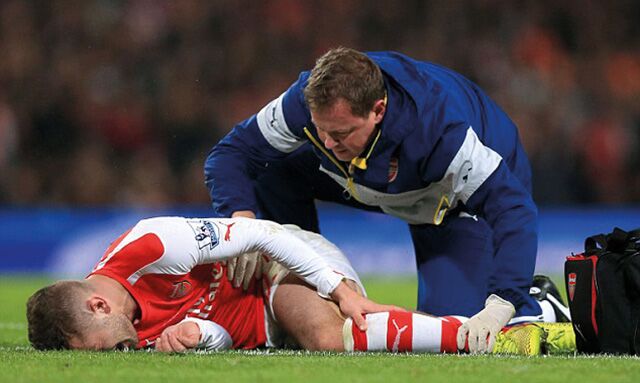
[dropcap]I[/dropcap]f you’re an active person it is more likely than not that you have experienced one or more injuries in your lifetime. Eoin Harte tells us how to stay fit while injured.
While they are far more prevalent in some sports than in others, each physical activity comes with the risk of injury. While many injuries are minor and may only keep people out of physical exercise for a couple of weeks, others can be far more serious.
Serious injuries can have a dramatic effect on your life and can leave people feeling very frustrated as their abilities are seriously limited. Clumsily attempting to keep a cast dry when showering while it’s wrapped up in a plastic Tesco bag is somewhat amusing at first, but soon those feelings will give way to frustration and exasperation.
For people whose lives revolve around sport and fitness, long-term injuries can have a damaging effect on not only their physical state, but their mental state too.
Third-year DCU journalism student Joshua Freeman spoke to the College View about the difficulties he faced after tearing ligaments in his right ankle while playing rugby for Boyne Community School, taking him out of sport for almost a year.
“I didn’t know what do”, Freeman said. “I had just had trials for Leinster a year before and the team was flying, it hit me really hard. Then with it being fifth year the work load was insane, so I had very little time.”
Freeman struggled with his weight following the injury, gaining between 20 and 25 kilos in the following years. He struggled to get back into sport following the injury lay off, saying, “I still had slight pains in my ankle. I tried to play for the school team again, but I gained so much weight I just wasn’t the same player.”
Freeman bemoaned the lack of advice given to him by his coaches regarding the injury. “I wasn’t given a programme or anything to help keep fit and my mental state took a hit too due to this”, he said.
In the past two years Freeman has lost 25 kilos and is down to a healthy weight of 71 kilos. He had this to say when asked how others should deal with receiving a serious injury. “Make sure you do something, keep active in some way. If you can’t run keep doing some core fitness or something and ensure your coaches look after you. It’s up to you and mentally I wasn’t right after and gained weight slowly bit by bit.”
Freeman’s story is far from unique amongst athletes who suffer serious injuries. Many sports-oriented people are on high-calorie diets to fuel their active lifestyle. However, when the amount of exercise they normally get comes to an abrupt stop it can be difficult to drop the amount of calories they consume.
Used to having a large appetite, these out of action athletes, now deprived of an important part of their lives, eat far more than is necessary for a low activity lifestyle.
To make matters worse, dopamine is released both after we exercise and after we eat. Dopamine is an important chemical that helps people feel good. Active people who are used to regular dopamine releases from exercise can turn to food to replace this feeling.
Therefore, it’s important to find some way to stay relatively fit when recovering from an injury. If you have injured an upper body part such as an arm or shoulder, using cycling machines can be a viable source of exercise that doesn’t put yourself at risk of more injury.
If you have injured a lower body part such as a knee or an ankle, upper body exercises that can be done when sitting, such as shoulder presses, can help you stay fit while you recover.
For those without access to proper exercise equipment, remember that body weight exercises can be just as useful. While an injury may greatly reduce the number of body weight exercises available, simple stretches should be done, as gentle exercise is better than no exercise at all.
These stretches can also help to reduce the length of recovery time, as well as decrease the chance of further injuries. If struggling with a lower back injury for example, stretching your hamstrings with simple exercises such as touching your toes can greatly help. This is because it reduces tension in your hamstrings which then in turn helps to reduce the tension in your lower back.
When returning from a long injury lay-off it’s natural to be anxious about using the afflicted body part again. However, being overly cautious could have negative effects as strength can only be built up again through using said body part.
The phenomenon known as ‘muscle memory’ also means that while the strength of the afflicted muscle may be greatly diminished at first, it is much easier to retrain the muscle than the first time around.
While dealing with injuries is hardly pleasant, it is not the end of the world. Avoiding certain pitfalls like overeating is important if you want to quickly get back to your best. While maintaining a level of fitness when injured can be difficult, it will be greatly appreciated after fully recuperating.
Eoin Harte
Image Credit: The Daily Mail



